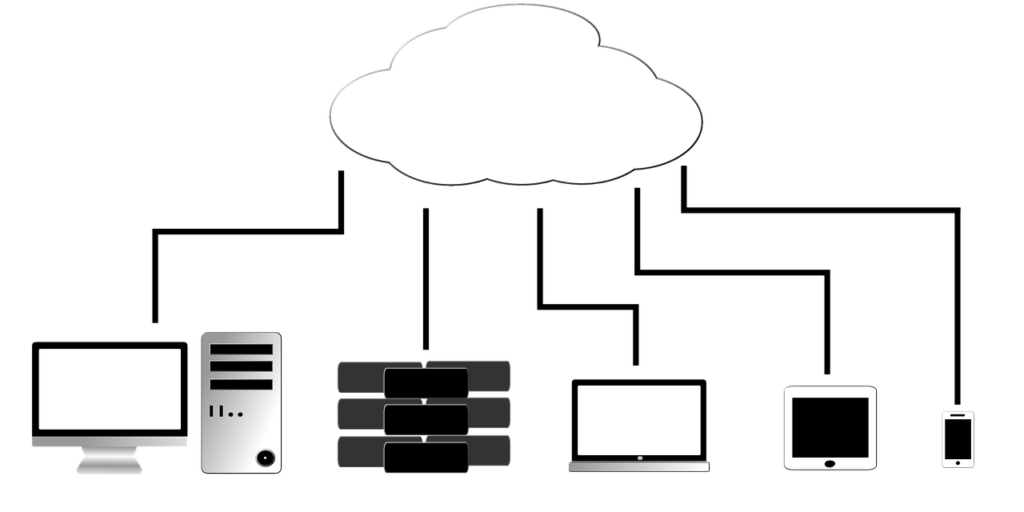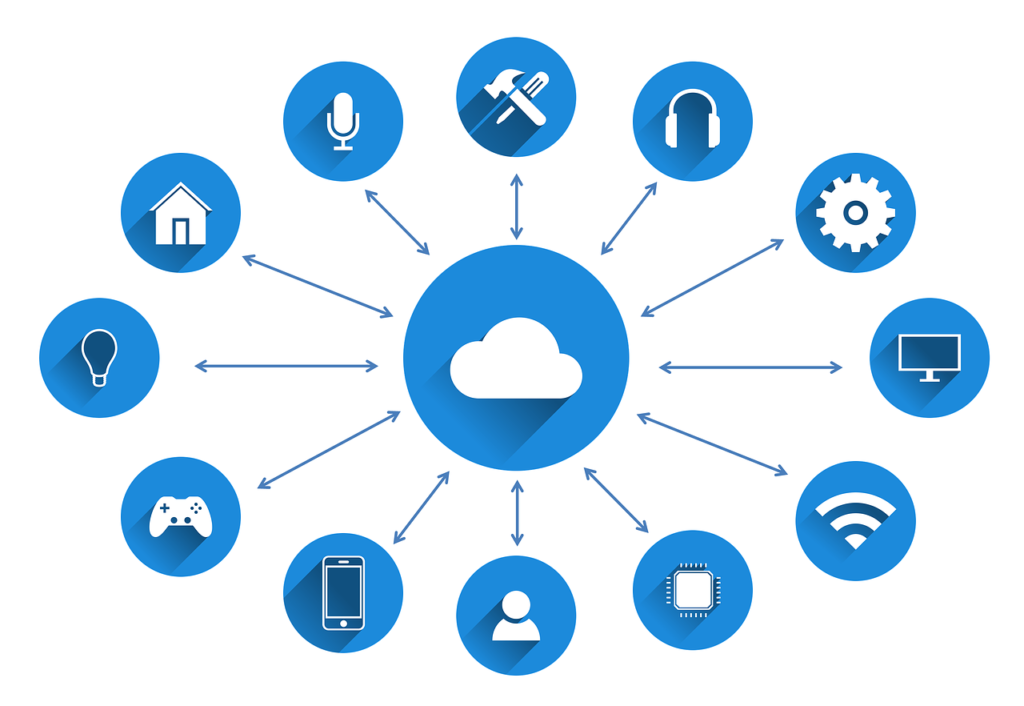In a globalized world where big companies rely on the IT outsourcing and the cloud computing to be more competitive, is there a way to achieve a competitive advantage? Yes, there is! And the answer relies on the concept of business ecosystem.
What is outsourcing?
Information technology (IT) outsourcing is one of the latest trends within companies. However, this concept is not that much recent, as back in the fifteenth and sixteenth centuries, in Italy, many city-states used to pay to military chiefs for troops when needed.
Dhar and Balakrishnan (2006) give the following definition about modern IT outsourcing:
IT outsourcing is an act of delegating or transferring some or all of the information technology related decision making rights, business processes, internal activities, and services to external providers, who develop, manage, and administer these activities in accordance with agreed upon deliverables, performance standards and outputs, as set forth in the contractual agreement.
What are the pros and cons of outsourcing?
Even if the concept started back in the fifteenth and sixteenth centuries it was not until the nineteenths that it began to gain more value. Dhar (2012) states that many organizations outsource to gain competitive advantage as they focus on their core objectives instead of developing IT related services. This author also claims to be other reasons, such as lower economical costs, high performance assurance and quality, or faster development cycle.
Nonetheless, even if the benefits of outsourcing are considerable, organizations have moved quite slowly in the learning curve. The main reason is that contracts with third parties are very short and the outsourced activities discrete. As objectives change, new contracts with new suppliers are signed and, therefore, a new learning curve is drawn. In other words, the relations with these external companies never mature. (Willcocks, 2011)
Nowadays, with the economic downturn and the interest of organizations to consolidate their numbers, not only the outsourcing process is starting again to grow increasingly, but also the so-called cloud computing.
Cloud computing
Garrison et al. (2012) defines this new concept as “a model for enabling convenient, on-demand network access to a shared pool of configurable computing resources (such as networks, servers, storage, applications, and services) that can be quickly provisioned and released with minimal management effort or service provider interaction”.
In contrast with IT outsourcing, cloud computing does not transfer IT related activities to external services. Instead, manages an IT infrastructure so that organizations can access it on a pay-by-use basis without taking care of the challenges it would produce if it were maintained in-house. In addition, it offers many more benefits. Firstly, lower IT expenditures in favour of on-demand technology. Secondly, guaranteed access to the latest software, and no need to care about out-dated equipment or upgrading. Thirdly, business agility, and finally, skilled IT personnel.
However, cloud computing still need to face some challenges, as the main drawbacks involve the security and privacy of the data, which depends directly on the country where the technological infrastructure is located and its laws, and the health of the relation between the organization and the vendor.

Cloud computing service models
There are three different cloud service models: Software as a service (SaaS), that offers a wide range of application over the World Wide Web such as emailing or enterprise resource planning; Platform as a Service (PaaS), that offers technical infrastructure like computing; and Infrastructure as a Service (IaaS), that offers physical infrastructure such as storage and memory.
A competitive advantage?
A successful cloud implementation, nonetheless, is not a source of differentiation anymore, as competitors can also imitate this strategy. A successful deployment is what can bring unique and valuable organizational benefits. In order to measure this competitive advantage, three organizational capabilities are considered: technical, managerial and relational. The technical capability involves the IT resources that give functionality and scalability. The managerial capability involves the coordination of the human knowledge capability to deal with the new cloud service. And least but not less the relational capability, which involves the cloud-vendor relationship. It has been proven indeed that a reliable collaboration is a strong factor. When a client considers that its cloud vendor is trustworthy, it is more likely to achieve greater and long-term technical and managerial benefits. In addition, client partners would be willing to work collaboratively and exchange more resources and information, hugely increasing the benefits. Then, it could be said that, the stronger the organization/vendor relationship, the greatest is the competitive advantage, which means it will be more difficult for competitors to compete. Furthermore, a healthy relation could provide new ideas for achieving shared goals that would be favourable for both client and vendor. On the contrary, the lack of trust would impede this shared and collaborative work environment. (Garrison, 2012)
Choosing a great cloud vendor is then crucial to make the most of this union. That is why, apart from finding one that fits well and whose services are considered to be enough, it must also be taken into account the personnel that work in it, as those are the people that will be working in the best interests of the client. In other words, we should not just focus on the short-term benefits, but also on the long-term advantages, because a long-term contract will move clients up in the learning curve that Willcocks (2011) discusses, a situation in which both partners trust one each other and seek for a common good. The time that takes to deploy this strategy is also essential to consider, as employees need formation to learn how to use these state-of-the-art services.
There are many businesses that are switching to cloud services nowadays. Many big organizations still fear to be the first ones implementing this type of services and, therefore, they are waiting to see the outcomes of their competitors to make their minds. In contrast, many small companies, also including start-ups, are quickly adopting cloud computing because it is easy to deploy it in such a small context; it is a scalable service that warrantees a long-term relation with the cloud vendor, and it saves money.

Business ecosystems
Another recent concept that is also gaining more and more popularity and can complement the concepts discussed above is that of “business ecosystems”. This type of ecosystem is defined as a large community of interconnected companies working together to create superior outcomes that no company would achieve on its own. The importance of adding value to the services or products that organizations offer in such a cooperative way is another long-term key differentiator in order to ensure the stability and survival of each entity and the whole ecosystem. However, the success of these types of communities relies, again, on a resilient relation between the companies. In order to measure this, four dimensions are considered: robustness against crises, creativity, productivity and interoperability to keep a positive exchange of information. (Kim et al., 2010)
But, as Kim et al. (2010) explains, it also has to be considered the role of the “keystone” organization, which has an enormous effect on the performance of the whole ecosystem. The reason is that these kinds of companies are considered the centre of the ecosystem because they link many other important partners and have an advantageous position. However, the authors also argue that it cannot be forgotten the role of the flagship companies as a hub-position linking many other smaller nodes in this ecosystem network.
In order to support the general healthiness it is required a strong support of IT. It could act as an intelligent service that regulates stable and fast response interactions between organizations both inside and outside the business ecosystem. The author also argues that a healthy flow of information is vital to keep a healthy community, and IT can protect that knowledge from intruders.
Advantages
All of the concepts reviewed can boost the financial and competitive situation of an organization when they are deployed successfully. Therefore, the concept of business ecosystem should evolve so that it also takes into consideration IT outsourcers and cloud service vendors as another partner. As a result, organizations will be able to spend more resources and time in their core and common objectives, because the existing environment of confidence will lead them to rely on other companies that will be responsible of their IT activities. One of the main concerns when applying a cloud service, the security of the information, could represent a little problem if all the partners of a community agree on establishing some common standards when accessing, transferring or managing data in the cloud.
Furthermore, as Garrison (2012) states, there are three cloud delivery models: the public, the private and the hybrid cloud. A private model can be expensive for just one company but, within a business ecosystem, it could be feasible and inexpensive to deploy and maintain it, as all the community partners would share both the services and costs. This way, the privacy of all the information that resides inside the union is more guaranteed, but never completely guaranteed, as there is always going to be someone attempting to access your data.
Disadvantages
However, an organization could loss some competitive advantage and control of its fate if it depends completely on the business ecosystem, IT outsourcers or cloud vendors. That is why a strategy that takes on the process, rules and guidelines towards the deployment of such services in your own company must be established. Not only that, but also a collaboration agreement should be signed by all of the partners of one ecosystem in order to keep it on the right track.
An important drawback of cloud computing to bear in mind is the dependency on the Internet connection. If it fails, not cloud service will work. That is why a good connection speed and alternate connections are needed.

Conclusion
A real competitive advantage is achieved when trust is the main principle that rules over a business ecosystem. It makes a difference as every tiny achievement benefits each and every community partner. And the implementation of a cloud strategy should be considered as soon as possible, because it will be a must-have service in the future in order to guarantee a long-term survival, but without rushing. The sooner it is deployed, the stronger will be the relation with the cloud vendor, each organization will be sooner get used to work in this on-demand way and benefits will show up promptly.

